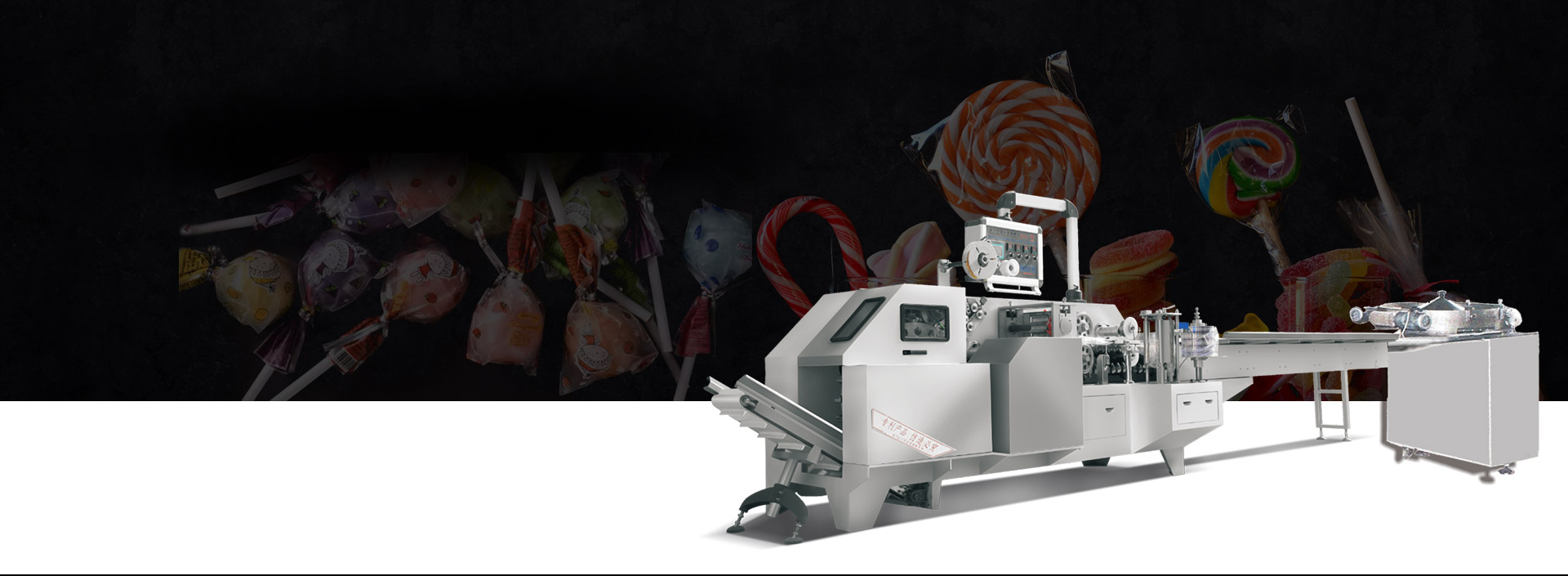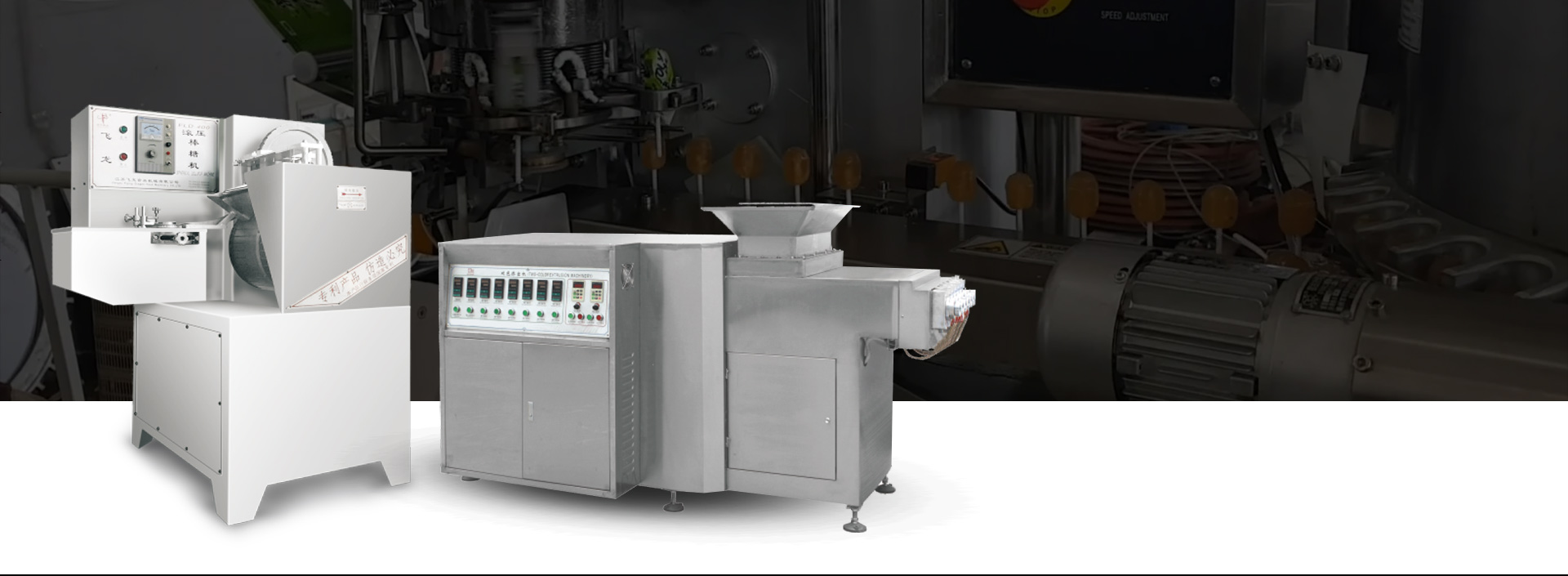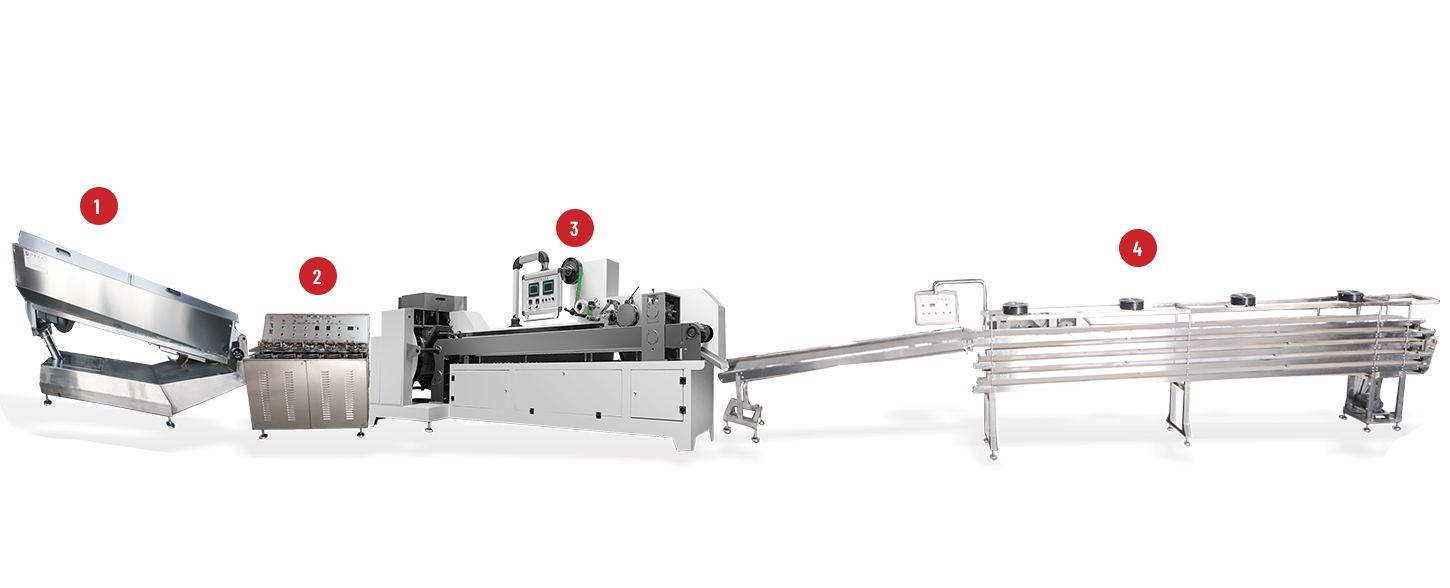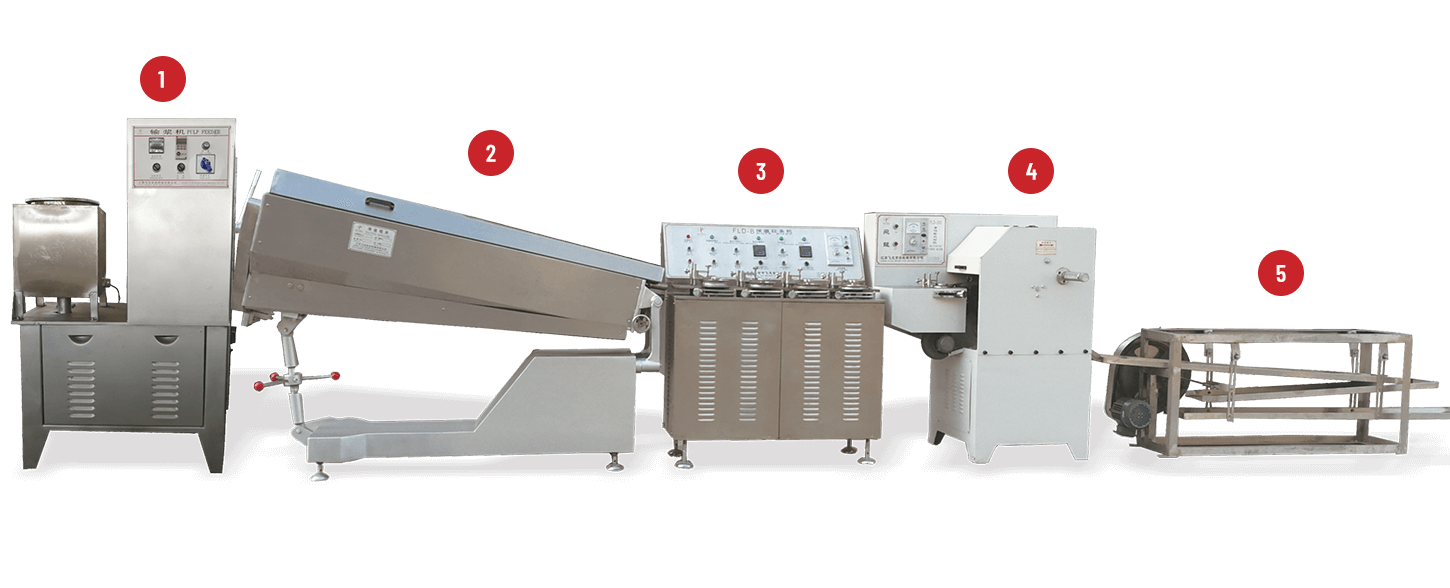Introduction to Hard Candy Machines
The candy industry plays a crucial role in global markets, with mass production being a cornerstone for meeting consumer demand efficiently. As the demand for sweets continues to rise, especially for hard candies, it becomes increasingly important to streamline production processes.
Hard candy machines are designed to facilitate large-scale, automated production, ensuring consistency, quality, and speed. These machines are integral in achieving high output while maintaining the precise texture, color, and shape that consumers expect. With advancements in technology, these machines have evolved to meet the growing needs of the market, offering manufacturers the ability to produce large volumes of candy without compromising quality.
As consumer preferences shift toward premium, high-quality hard candies, the importance of efficient production systems is more critical than ever. The growing global demand for these treats makes it essential for manufacturers to invest in reliable, high-performance machinery that can keep pace with production needs while ensuring top-tier product standards.
The Evolution of Hard Candy Machines
Traditionally, hard candy production was a labor-intensive process, often relying on manual methods that involved small batches and slower production speeds. Candy makers would carefully heat sugar and other ingredients, then pour and shape them by hand or using basic molds. This process, while effective in its time, limited production capacity and consistency, making it difficult to meet the rising demand for hard candies, especially as they gained popularity in global markets.
The invention and subsequent improvement of hard candy machines revolutionized the candy industry. By automating key stages of production, these machines allowed for faster, more consistent, and larger-scale manufacturing. The first hard candy machines were relatively simple, performing basic functions like cooking, cooling, and cutting, but their impact was profound. For the first time, candy makers could produce candies in much larger quantities with far less manual intervention.
Over time, significant technological advancements in machinery have dramatically transformed the hard candy production process. For example, the introduction of continuous cooking and cooling systems enabled manufacturers to streamline the candy-making process, reducing the need for manual oversight and allowing for the production of larger volumes. Moreover, automated depositing and cutting systems helped increase production speeds while ensuring uniformity in shape and size, an essential factor in meeting consumer expectations for high-quality, consistent products.
Other key advancements include precision temperature control, which ensures the perfect texture for each batch, and the integration of computer-driven systems that monitor and adjust the production process in real-time. These innovations have allowed manufacturers to not only increase efficiency and scale but also enhance product quality, making it possible to meet the growing global demand for high-quality hard candies.
Key Features of Hard Candy Machines for Mass Production
Hard candy machines designed for mass production come equipped with a range of features that enable efficient, high-quality, and high-output candy manufacturing. These machines have evolved to meet the growing demand for consistent, premium hard candies at large scales. Below are the key features of these machines that make them vital to modern candy production:
| Feature | Description |
|---|---|
| Automation | Hard candy machines are highly automated, reducing the need for manual labor. Automation enhances consistency, reduces human error, and speeds up production. |
| High Production Capacity | These machines are capable of producing large quantities of candy per hour, allowing manufacturers to meet high global demand efficiently. |
| Temperature Control | Precision temperature control ensures that the candy is cooked and cooled to the exact specifications required for optimal texture and quality. |
| Continuous Operation | Many hard candy machines operate continuously, ensuring that production is not halted for long periods, which increases output and reduces downtime. |
| Consistency and Uniformity | Advanced technology ensures that every candy produced has the same size, shape, and quality. This consistency is crucial for maintaining consumer satisfaction. |
| Versatility | Modern machines offer flexibility to create different types of hard candies in various shapes, colors, and flavors, allowing for product diversity and innovation. |
| Efficient Energy Use | Newer hard candy machines are designed to optimize energy consumption, making the production process more sustainable and cost-effective. |
| Sanitation and Maintenance | The machines are designed for easy cleaning and maintenance, ensuring compliance with health standards and reducing downtime during maintenance. |
These features collectively make hard candy machines essential to large-scale production. The combination of automation, high production capacity, and consistency allows manufacturers to deliver high-quality products on a global scale, meeting consumer demand while optimizing operational costs. The evolution of these machines has undoubtedly played a pivotal role in shaping the modern candy industry.
The Impact of Hard Candy Machines on Production Efficiency
1. Increased Production Speed
One of the most significant impacts of hard candy machines is the dramatic increase in production speed. These machines are capable of running continuously at high speeds, producing large volumes of candy without the need for frequent breaks or manual intervention. This has allowed manufacturers to meet large-scale demands, ensuring that candy is produced faster and more efficiently, with minimal downtime.
2. Consistency and Quality Control
Hard candy machines are designed to ensure uniformity and consistency in every batch produced. Through precise control of cooking temperatures, cooling times, and shaping processes, these machines eliminate the variability often present in manual methods. The result is a product with uniform texture, shape, and appearance, which is essential in maintaining high standards of quality and consumer satisfaction.
3. Reduction in Labor Costs
The automation provided by modern hard candy machines reduces the need for a large workforce to oversee production. With the machines handling most of the tasks—from mixing and cooking to shaping and cutting—labor costs are significantly lowered. Fewer workers are needed to manage the machines, and manual handling is minimized, leading to savings in wages, training, and safety-related expenses.
4. Enhanced Flexibility and Customization
Modern hard candy machines offer the flexibility to produce a variety of candy types with minimal adjustments. Manufacturers can easily change the candy's flavor, shape, and color, allowing them to meet diverse consumer preferences and trends. This versatility also enables manufacturers to introduce new products quickly, which is vital in a competitive market where consumer tastes are constantly evolving.
5. Energy Efficiency
The newer generations of hard candy machines are designed with energy efficiency in mind. Innovations in machinery allow for better heat management and reduced energy consumption during the production process. As a result, manufacturers can reduce operational costs while also contributing to more sustainable production practices.
6. Lower Production Costs
By improving speed, reducing labor requirements, and minimizing material waste, hard candy machines help to lower overall production costs. These cost savings allow manufacturers to produce more candy at a lower price, which can increase profitability or enable more competitive pricing in the market.
Customization and Versatility of Hard Candy Machines
One of the standout advantages of modern hard candy machines is their remarkable customization and versatility, allowing manufacturers to produce a wide range of candy products to meet diverse market demands. These machines are designed to be adaptable, offering a level of flexibility that was previously unattainable with traditional, manual production methods. With the ability to adjust various settings, change product designs, and experiment with new flavors, hard candy machines have become indispensable tools for manufacturers aiming to stay competitive in the fast-evolving candy industry.
1. Flavor and Ingredient Customization
Hard candy machines offer manufacturers the ability to experiment with a wide variety of flavors and ingredients. Whether it’s traditional fruity flavors, sour varieties, or more innovative combinations, these machines can accommodate different recipes without significant downtime. This flexibility allows candy makers to respond quickly to consumer trends and demands for novel flavors, ensuring that their product offerings remain fresh and appealing. Additionally, these machines can incorporate natural and alternative ingredients, catering to growing consumer preferences for organic, vegan, or allergen-free products.
2. Shape and Size Variability
The ability to customize the shape and size of the candy is another key feature of modern hard candy machines. From classic round lollipops to more intricate, unique shapes, these machines can easily adjust to produce a wide range of designs. Molds can be changed quickly, allowing manufacturers to create candies in various forms, whether for seasonal promotions, special events, or different target demographics. This versatility enables brands to introduce limited-edition products or seasonal items without needing to invest in entirely new production lines.
3. Color Customization
In addition to flavor and shape, hard candy machines also provide the ability to adjust the color of the candies. These machines can mix natural or artificial coloring agents into the candy mixture during production, offering endless possibilities for color combinations. Whether producing candies in vibrant, multi-colored patterns or pastel shades for more delicate, gourmet offerings, the ability to customize colors enhances the visual appeal of the product. This feature is particularly important for creating themed or promotional candies that align with holidays, special occasions, or branding strategies.
4. Integration of Special Coatings and Fillings
Another area where customization shines is in the ability to add special coatings or fillings to hard candies. Some modern machines are equipped with the capability to coat candies with sugar crystals, powdered flavors, or even chocolate, adding an extra layer of texture and flavor. Additionally, certain hard candy machines are designed to incorporate liquid or solid fillings into the candy, offering a more complex and indulgent product. This feature allows manufacturers to innovate beyond traditional hard candies and expand their product line to include candy with dynamic textures and tastes.
5. Batch-Specific Adjustments
The ability to make batch-specific adjustments further enhances the customization options available with hard candy machines. These machines can be fine-tuned to handle different sizes of production runs, from small artisanal batches to large-scale commercial operations. Whether a company is producing limited-run products or gearing up for a peak holiday season, the machine’s settings can be easily adjusted to optimize production for the specific needs of each batch. This reduces waste and improves efficiency, making it easier for manufacturers to create high-quality candies at any scale.
6. Adaptability to Market Trends
As consumer preferences evolve, so too must the production process. Modern hard candy machines are equipped with advanced controls and monitoring systems that make it easier to adapt to new market trends. Whether it's creating healthier candy options with reduced sugar or experimenting with novel textures like gummies combined with hard candy, these machines enable manufacturers to introduce new products quickly and efficiently. This adaptability ensures that candy makers can remain on the cutting edge of industry trends and cater to ever-changing consumer demands.
7. Faster Product Development
The customization and versatility of hard candy machines also contribute to faster product development cycles. With the ability to modify recipes, change molds, and experiment with new ingredients or coatings on the fly, manufacturers can shorten the time it takes to bring a new product to market. This is crucial in an industry where speed to market can make the difference between capitalizing on a trend or missing out.
The Future of Hard Candy Machines in Mass Production
Technology Integration: IoT and Machine Learning
Emerging technologies such as the Internet of Things (IoT) and machine learning are playing a crucial role in the future of hard candy machines, enabling a new era of automation, precision, and data-driven optimization.
IoT in Production: IoT enables hard candy machines to connect to networks and communicate in real-time, allowing for remote monitoring and control of production processes. This connectivity can help manufacturers track machine performance, identify potential issues before they become problems, and ensure consistent product quality. With IoT, manufacturers can also gather and analyze vast amounts of data, optimizing the production process for efficiency and identifying areas for improvement.
Machine Learning for Optimization: Machine learning algorithms can be integrated into hard candy machines to continuously improve production efficiency. These algorithms learn from past data, analyzing patterns in temperature, speed, ingredient mixtures, and even energy consumption. By automatically adjusting settings based on real-time conditions, these machines can optimize production for higher throughput and less waste. Additionally, machine learning can predict maintenance needs, reducing downtime and extending the lifespan of the equipment.
Sustainability: Energy Efficiency and Eco-Friendly Materials
As the global focus on sustainability continues to grow, there is increasing pressure on the candy industry to adopt eco-friendly practices in production. Hard candy machines are evolving to meet this demand by incorporating energy-efficient technologies and sustainable materials.
Energy Efficiency: Future hard candy machines will incorporate more advanced energy-saving features, such as improved heat management systems and optimized power consumption. This not only helps reduce operational costs but also minimizes the environmental impact of candy production. Energy-efficient machines will be capable of maintaining high production speeds while using less power, making the manufacturing process more sustainable.
Eco-Friendly Materials: In line with sustainability trends, manufacturers are also focusing on using environmentally friendly materials for their hard candy machines. From biodegradable packaging to recyclable components, the use of sustainable materials will become increasingly important. Additionally, some machines are being designed to minimize waste by optimizing ingredient usage, reducing the amount of raw materials lost during production.
Water and Resource Conservation: As part of their sustainability efforts, future candy machines may also focus on reducing water consumption and improving resource management. Closed-loop systems that reuse water or other materials can help reduce the environmental footprint of hard candy production.
Customization in Production: Small Batches with High Efficiency
One of the most exciting trends in the future of hard candy machines is the potential to further refine the balance between small-batch flexibility and large-scale efficiency. While large-scale production remains essential, there is a growing market demand for artisanal, custom-made, or limited-edition candy products. Hard candy machines will be designed to cater to both needs.
Flexible Production for Small Batches: Future machines will offer even more advanced capabilities for small-batch production while maintaining high efficiency. With adjustable settings and easy mold changes, these machines will be able to switch seamlessly between large-scale production and smaller, custom batches, making it easier to cater to niche markets, special occasions, or limited-run products without sacrificing speed or consistency.
Personalization Features: As consumer preferences for personalized products rise, hard candy machines will allow manufacturers to produce candies with unique designs, flavors, or even personalized messages. This level of customization is expected to become more integrated into mass production lines, enabling manufacturers to offer a wide variety of personalized candy options while still benefiting from the efficiencies of large-scale production.
High-Efficiency Systems for Diverse Needs: The future of hard candy machines will combine advanced technology with the ability to handle a diverse range of production requirements. Machines will be equipped with more precise controls that allow for greater flexibility in terms of batch sizes, flavors, ingredients, and designs, all while maintaining high levels of efficiency and consistency across different production runs.
The Importance of Hard Candy Machines in Mass Production
Hard candy machines have become indispensable in the candy industry, driving the large-scale production of high-quality products to meet the demands of an ever-growing market. These machines have evolved over time to not only increase the speed and efficiency of production but also to ensure consistency and quality in every batch. The ability to produce vast quantities of candy at a fraction of the time compared to traditional methods has made mass production both possible and profitable for candy manufacturers worldwide.
The growing global demand for hard candies, driven by consumer preferences for diverse flavors, shapes, and premium options, has made the role of hard candy machines even more critical. With the rise of online retail, international markets, and seasonal demand fluctuations, manufacturers need production systems that can scale quickly and respond to changing needs. Hard candy machines, equipped with cutting-edge technology, enable manufacturers to maintain the high standards expected by consumers while meeting these demands efficiently.
Balancing Technology, Efficiency, and Quality
In modern candy production, the balance between technology, efficiency, and quality is crucial. Hard candy machines are at the forefront of this balance, combining the power of automation with the precision needed to maintain product consistency. Advanced features like real-time temperature control, automated molding, and shape customization allow manufacturers to achieve the desired candy texture, size, and appearance without compromising speed.
Moreover, technological advancements in areas such as IoT connectivity and machine learning are revolutionizing production processes. These technologies enable manufacturers to continuously optimize their operations by monitoring performance, predicting maintenance needs, and adjusting production parameters in real time. The result is not only improved operational efficiency but also the ability to offer customized products at scale, meeting the varied tastes and preferences of consumers.
Enabling Manufacturers to Keep Up with Demands
The demand for high-quality, diverse hard candies is ever-increasing, and hard candy machines are central to meeting these needs. By integrating cutting-edge technology, these machines provide manufacturers with the tools to stay competitive in a dynamic market. Whether producing large volumes of classic hard candies or creating bespoke, seasonal treats, these machines are designed to handle both high-output and customizable production runs with ease.
As manufacturers face the pressures of meeting the global demand for candy while maintaining quality, the role of efficient, flexible, and high-tech machines becomes more important than ever. Hard candy machines allow for the seamless integration of new trends, from healthier candy options to innovative designs and flavors, ensuring manufacturers can remain at the forefront of the candy industry.
At Jiangsu Flying Dragon Food Machinery Co., Ltd., we specialize in providing advanced hard candy machines that offer the perfect blend of technology, efficiency, and quality. Our machines are designed to help manufacturers meet the challenges of modern candy production, ensuring high output, precision, and versatility. Whether you’re looking to enhance your production line or expand your product offerings, we’re here to support your business every step of the way.


 ENG
ENG
 English
English 中文简体
中文简体 русский
русский Français
Français Español
Español عربى
عربى

















 +86-(0)515-8465666
+86-(0)515-8465666 +86-(0)515-85566996
+86-(0)515-85566996 +86-138 1559 9708
+86-138 1559 9708 flyloong@flyloongcn.com
flyloong@flyloongcn.com 
 Home
Home